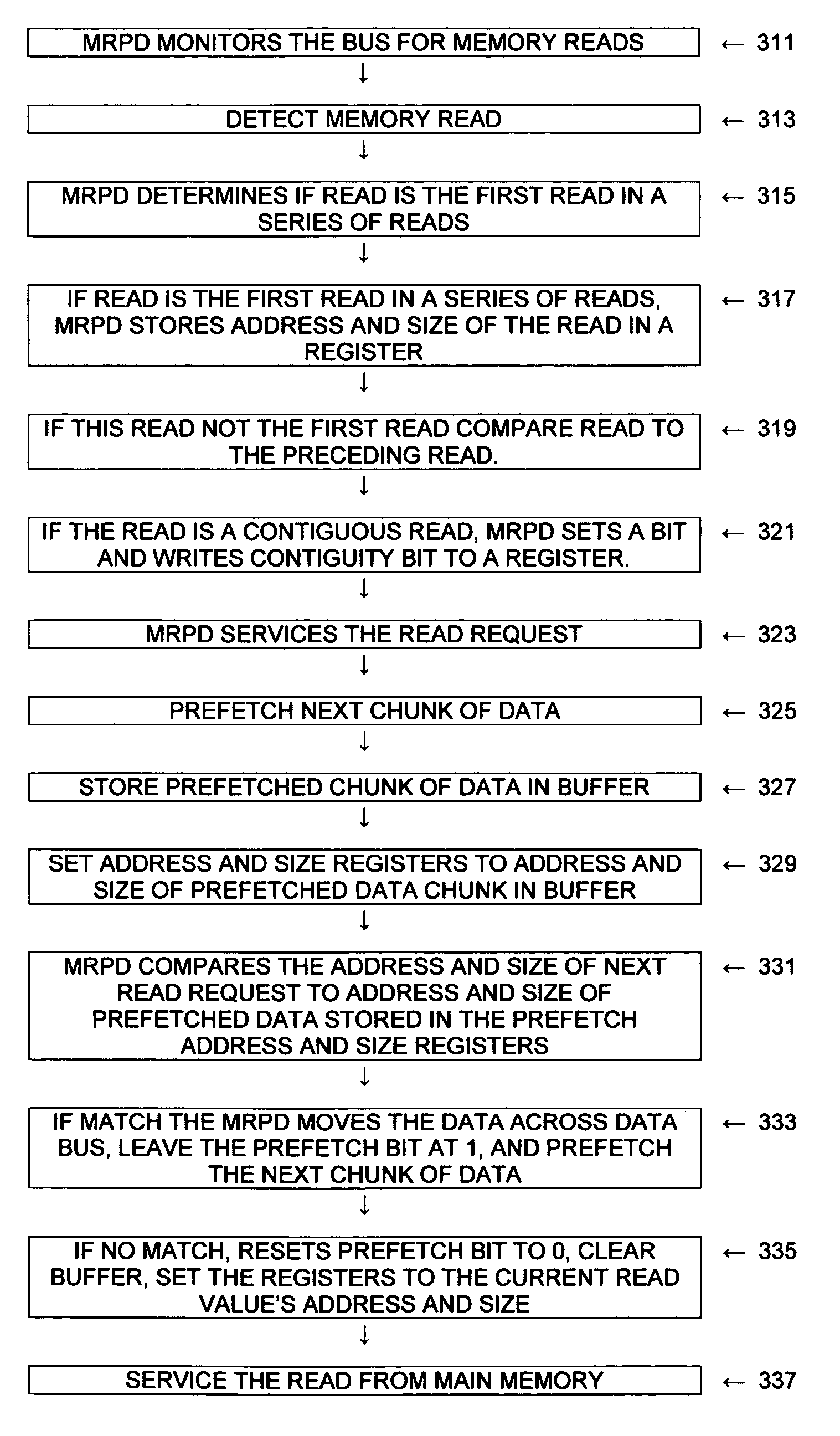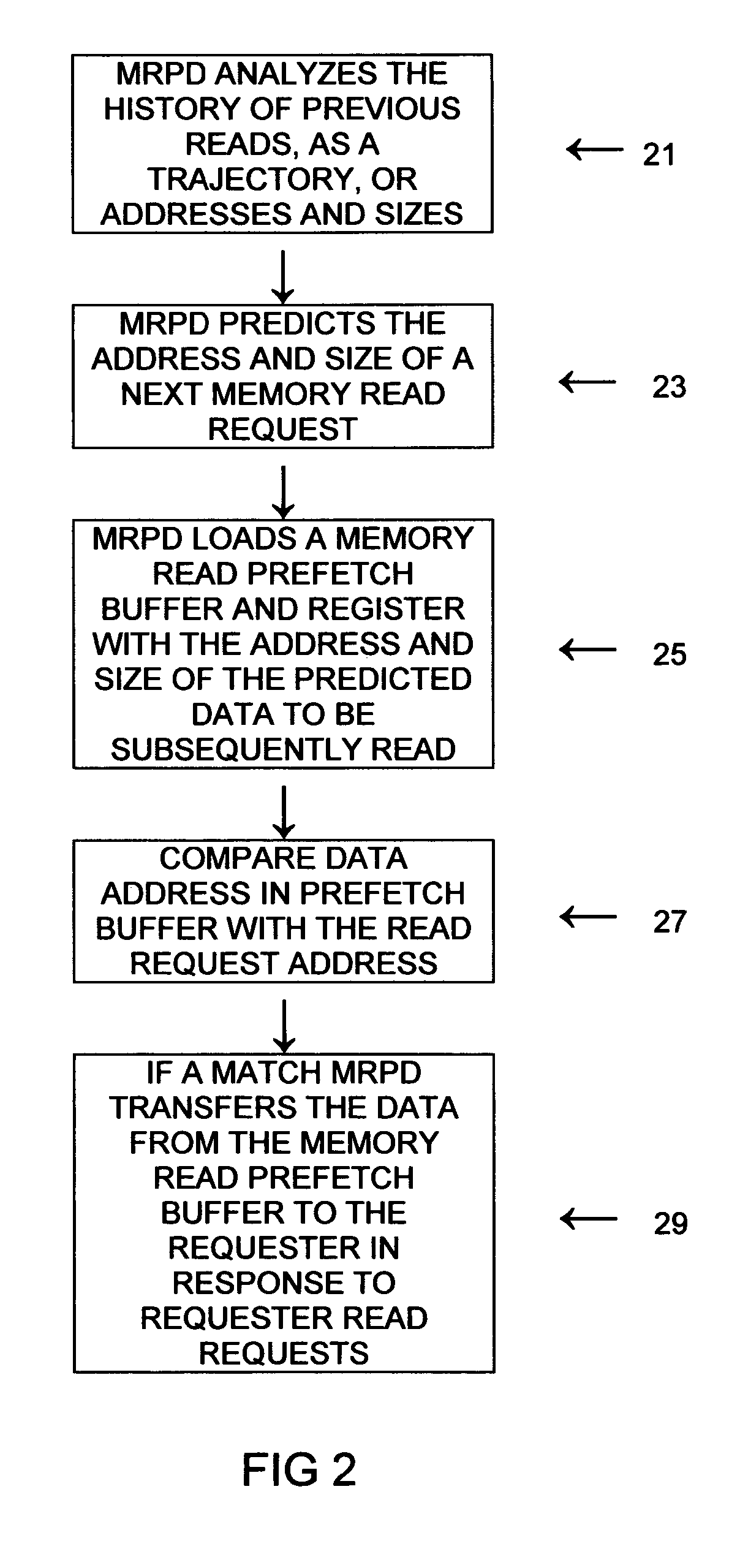Memory prefetch method and system
a prefetch method and memory technology, applied in the field of memory prefetch method and system, can solve the problems of critical latency issue, significant component of latency, request to wait for data, etc., and achieve the effect of reducing data latency and cache misses, saving time, and reducing latency
- Summary
- Abstract
- Description
- Claims
- Application Information
AI Technical Summary
Benefits of technology
Problems solved by technology
Method used
Image
Examples
Embodiment Construction
[0042] The nature, objectives, and advantages of the invention will become more apparent to those skilled in the art after considering the following detailed description in connection with the accompanying drawings.
I. Hardware Components and Interconnections
[0043] One aspect of the invention is a data bridge including a Memory Prefetch Read Device. The data bridge and Memory Prefetch Read Device are to prefetch data from a memory across a bus to a remote agent in response to memory read calls from the remote agent. As an example, the memory read prefetch device's memory read prefetch buffer is loaded with data chunk having a size greater than the requested data to be read; and data is transferred from the memory read prefetch buffer to the remote agent in response to a remote agent read call if the actual data address of the memory to be read matches the address and size of data in the memory read prefetch buffer.
[0044]FIG. 1 is a high level schematic overview of the data bridge...
PUM
 Login to View More
Login to View More Abstract
Description
Claims
Application Information
 Login to View More
Login to View More - R&D
- Intellectual Property
- Life Sciences
- Materials
- Tech Scout
- Unparalleled Data Quality
- Higher Quality Content
- 60% Fewer Hallucinations
Browse by: Latest US Patents, China's latest patents, Technical Efficacy Thesaurus, Application Domain, Technology Topic, Popular Technical Reports.
© 2025 PatSnap. All rights reserved.Legal|Privacy policy|Modern Slavery Act Transparency Statement|Sitemap|About US| Contact US: help@patsnap.com



